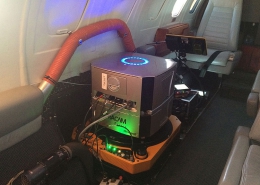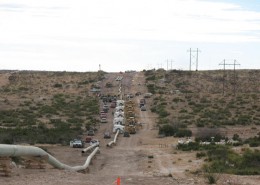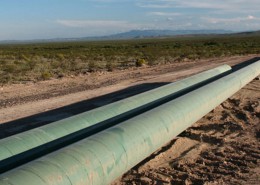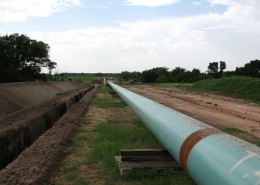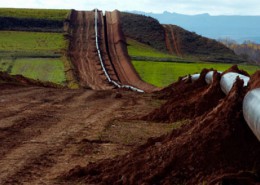 For organizations working on major oil and gas development projects, completing an accurate, high-quality pipeline survey in a timely manner will always be a major challenge. Because of this, a pipeline surveyors needs to take advantage of Geographic Information System technology, or GIS. Simply put, GIS helps clients do things they would never be able to do on their own, like map, visualize and analyze large areas of land quickly. Of course, when your goal is to gain a high degree of understanding about miles of a potential pipeline route in a relatively short period of time, GIS can mean big things for you, especially when it is paired with mobile technology. In this post, we’ll be taking a closer look at mobile GIS, and how it can help you conduct a better pipeline survey.
For organizations working on major oil and gas development projects, completing an accurate, high-quality pipeline survey in a timely manner will always be a major challenge. Because of this, a pipeline surveyors needs to take advantage of Geographic Information System technology, or GIS. Simply put, GIS helps clients do things they would never be able to do on their own, like map, visualize and analyze large areas of land quickly. Of course, when your goal is to gain a high degree of understanding about miles of a potential pipeline route in a relatively short period of time, GIS can mean big things for you, especially when it is paired with mobile technology. In this post, we’ll be taking a closer look at mobile GIS, and how it can help you conduct a better pipeline survey.
Faster, More Cost Effective Pipeline Surveys
If you’re considering using GIS technology to support your pipeline project, its ability to help you secure a pipeline survey quickly by utilizing the most up-to-date data is probably a big part of the reason why.
GIS can draw results from the latest and most advanced surveying technologies and then upload those results while on site using the latest mobile GIS technology. These collection technologies include unmanned aerial vehicles (UAVs) and 3D laser scanning (LiDAR), both of which help to streamline the process even more.
The Ability to Make Informed Decisions
Gathering all of this detailed information quickly is great, but another area where mobile GIS really shines is in its ability to allow pipeline development teams to make the most of that data by visualizing it and analyzing it, even when in the field. During a pipeline development project, picking the proper route is key to ensuring the ongoing success of the pipeline and this is getting harder to do all the time as pipeline right-of-ways continue to grow more crowded.
GIS data allows teams to understand what’s going on in, around, under and above a proposed pipeline route. In turn, this enables teams to make informed decisions about where to build pipelines, rather than just relying on guesswork as they might have done in the past. As a result, picking the ideal route for a pipeline is easier today than it has ever been—thanks to GIS.
Better Communication Across The Entire Project Team
Once you have your pipeline survey data available, it’s important to make sure that everyone is on the same page about the project. This can be difficult to do with a large project team that’s usually made up of different stakeholder groups and spread across a wide area. From the engineers in the office to the workers in the field, everyone needs access to the same centralized source of information.
Fortunately, GIS technology makes this a possibility. Everyone who works on the project will be able to access and add to the GIS information. Crucially, this information can also be accessed on mobile devices by workers in the field. This means that no one will ever have to go onto a project without reliable access to the most accurate information and documents that they need.

